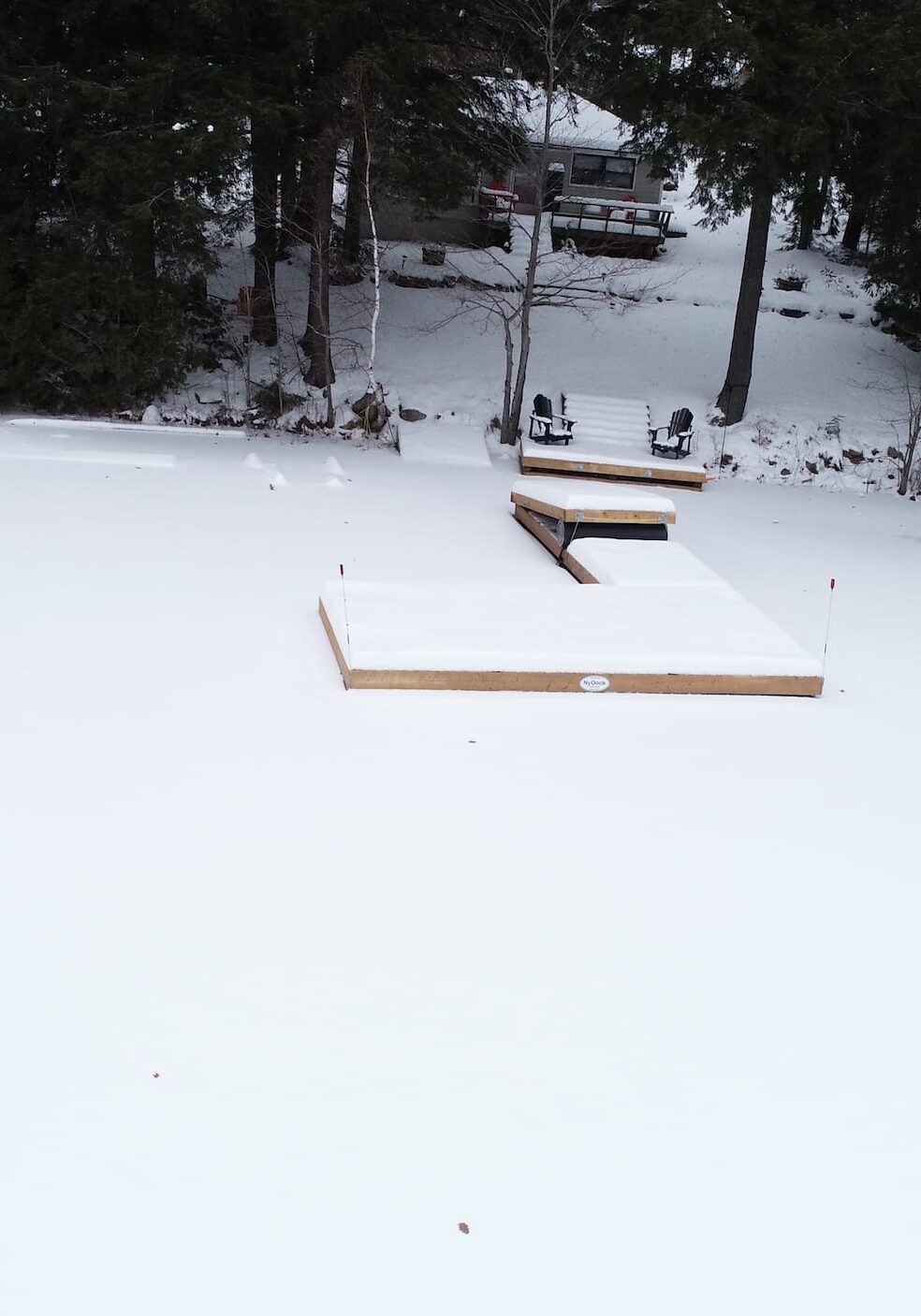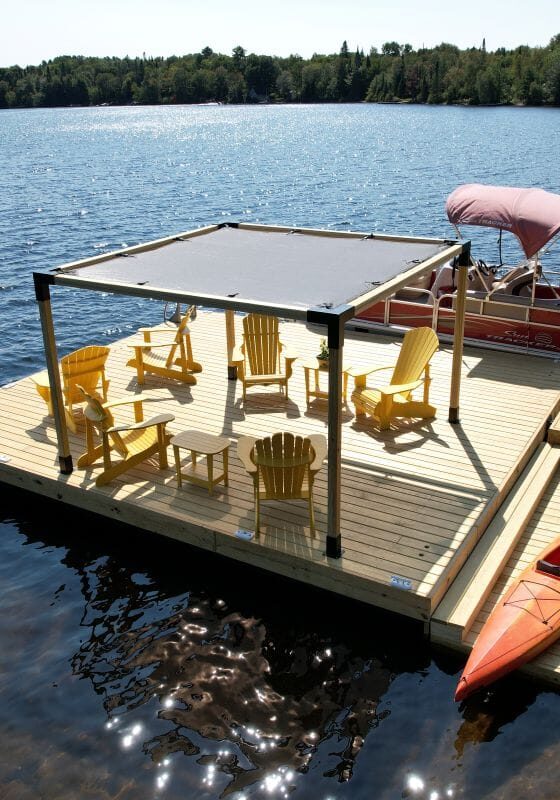When it comes to choosing a floating dock, one of the most crucial decisions homeowners face is determining the ideal size. The size of your dock will affect its functionality, durability, and how well it suits your unique waterfront space. In this guide, we'll walk you through the key factors to consider, standard dock sizes, and how to choose the best size for your floating dock.

Factors to Consider When Choosing a Floating Dock Size
Choosing the right size for your floating dock isn't just about measuring the space. Several factors play a role in determining the perfect dimensions for your needs. These include:
- Intended Use: What will you be using your floating dock for? Are you docking a boat, launching kayaks or paddleboards, or using the dock for swimming or social gatherings? Each use requires different space considerations.
- Available Waterfront Space: Take measurements of your shoreline or waterfront area. Make sure there’s enough room for the dock to float and remain stable in different water conditions.
- Water Depth and Conditions: The depth of the water at your site affects dock location. For shallow waters, you may need a longer ramp and dock to reach suitable floating conditions.
- Local Regulations and Permits: Make sure to check any zoning laws or permit requirements in your area. These may influence the maximum size or placement of your dock.
- Budget: Larger docks tend to cost more, not only in materials but also in installation. Be sure to factor your budget into your decision.
Standard Dock Sizes and Configurations
When shopping for a floating dock, you’ll find a variety of standard sizes and configurations. Here are a few examples of typical floating dock dimensions:
- Small Docks: Ideal for mooring smaller boats or watercraft like kayaks and paddleboards, small floating docks typically measure around 6x12 feet or 6x16 feet.
- Medium Docks: These are perfect for docking motorboats or creating a functional recreational space for a couple of chairs or beach towels for drying off after swimming. A medium-sized dock generally measures 8 to 10 feet wide x 20 feet long.
- Large Docks: For those looking for a spacious entertainment area or a large boat dock, consider a dock that is 12x24 feet or larger. Similar to building a deck in your yard, a dock for entertaining is much like a deck on the water. Its size can be tailored to suit patio furniture, chairs, shade structures, and traffic flow.
Popular dock configurations include:
- Straight Docks – The Classic by NyDock: The most common layout, the Classic is ideal for watercraft that need to be moored along one side. Perfect for smaller boats or simple access to the water, The Classic offers a reliable and sturdy option for homeowners.
- T-Shaped Docks – The Big T by NyDock: The Big T configuration provides additional space for docking boats and features an extended platform at the end, ideal for lounging, fishing, or swimming. Its T-shape design maximizes the space at the end of the dock, offering a great spot for socializing or relaxing by the water.
- L-Shaped Docks – The Loung by NyDock: The Lounge is perfect for those who need a cornered design or want additional space for docking and lounging. The L-shape maximizes available space, offering easy access to the water and extra room for recreation or storage.
- Custom Docks: If you need a dock tailored to your unique space or specific needs, NyDock also offers Custom Docks. Whether it’s a larger layout, unique shape, or additional features like built-in seating, a dog ramp, or a PWC dock, a custom dock ensures you get exactly what you need for your waterfront.
Dock Size Recommendations for Different Use Cases
The right size of your floating dock depends largely on how you plan to use it. Here’s a breakdown of dock sizes based on common use cases:
- For Kayaks and Paddleboards: If you're using your dock primarily for launching kayaks or paddleboards, a smaller 6x16 foot dock is usually sufficient. This compact size provides just enough space for your watercraft and a place to sit and store gear.
- For Motorboats: Larger motorboats need more space. A medium-sized dock, such as an 8x20-foot option, will offer ample room to dock your boat and still leave space for other uses, like fishing or relaxing.
- For Entertaining and Swimming: For those looking to create a multi-use dock for swimming, socializing, or sunbathing, opt for a larger floating dock. A 12x24-foot or even larger dock provides plenty of space for gathering with family and friends, with room for lounge chairs and storage. A 20x24-foot NyDock is a popular size for entertaining and enjoying life on the water.
How to Adjust Dock Size Based on Water Conditions
Water depth, tides, and wave conditions are essential factors when deciding on the right size for your floating dock. If you live in an area with varying water levels or frequent wave activity, your dock may need to be longer or larger to maintain stability and ensure safety.
- Shallow Waters: In shallow waters, a smaller dock may be sufficient. However, ensure that the dock is still stable and won’t touch bottom in low water levels.
- Wave and Current Activity: If your area experiences significant wave action or currents, you may need a wider or more robust dock to prevent it from shifting or becoming unstable. Securing your dock with piles and pile guides and considering the direction of the dock’s pontoon relative to the current can also improve stability in these challenging circumstances.
Customizing Your Dock to Meet Specific Needs
One of the key benefits of floating docks is their flexibility. Many homeowners opt for modular or expandable dock systems, which can be adjusted over time as needs change. Whether you want to add more space for guests or extend the dock to accommodate a larger boat, customizing your dock system is a convenient and cost-effective way to adapt.
Modular floating docks also make it easy to expand or move sections to different locations, ensuring that your dock system meets your requirements for many years to come. NyDock’s can be easily added onto and reconfigured as your needs change.
The Role of Materials in Dock Size Decisions
The material you choose for your floating dock also plays a role in determining its size and stability. Different materials come with their own set of benefits and considerations:
- Wood Docks: Traditional wood docks are a popular choice, offering customization to a variety of sizes. While wood requires some maintenance to preserve its appearance and longevity, it provides a classic aesthetic that many homeowners prefer. Lumber manufacturing in standard lengths makes certain dock sizes more economical.
- Poly Composite Docks: Composite docks, made from materials like PVC, offer a low-maintenance and highly durable solution for homeowners. Resistant to weather, moisture, and UV rays, these docks are ideal for areas with harsh conditions. They require no regular sealing, staining, or painting, reducing upkeep significantly. Perfect for larger installations, composite docks are built to last, providing long-term strength and aesthetic appeal with minimal care.
Choosing the Right Floating Dock Size for Your Waterfront
Choosing the best size for your floating dock ultimately depends on several factors including your intended use, available space, water conditions, and budget. By considering these elements, you can make an informed decision that will ensure your dock is both functional and safe for years to come.
Whether you're looking for a small kayak launching pad or a large entertainment area on the water, NyDock offers a wide range of customizable floating docks to suit your needs.






